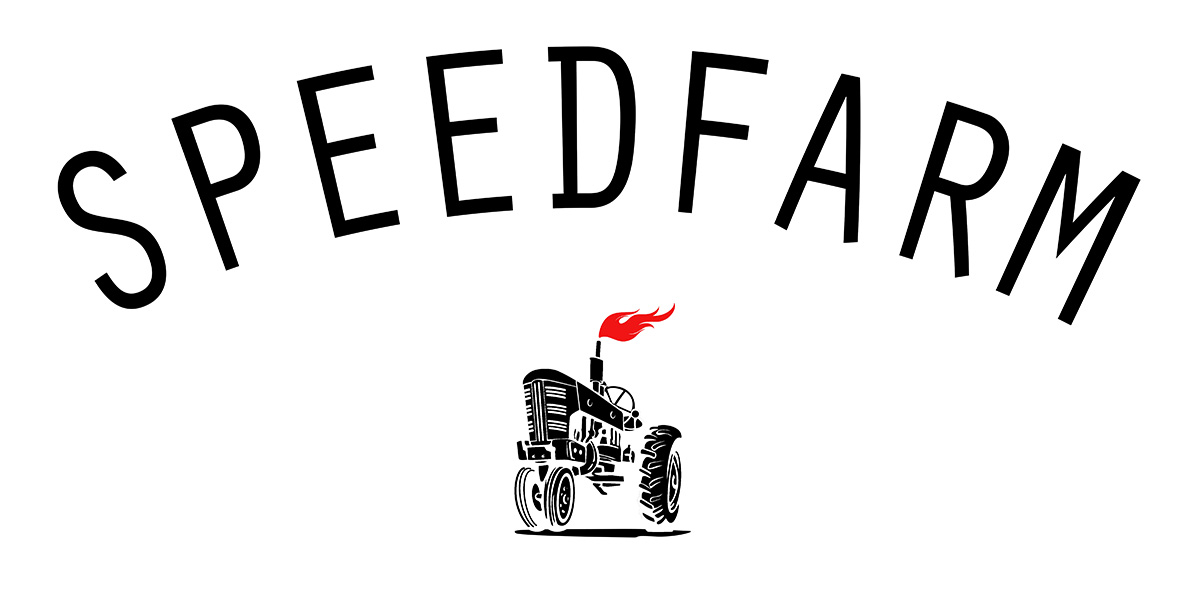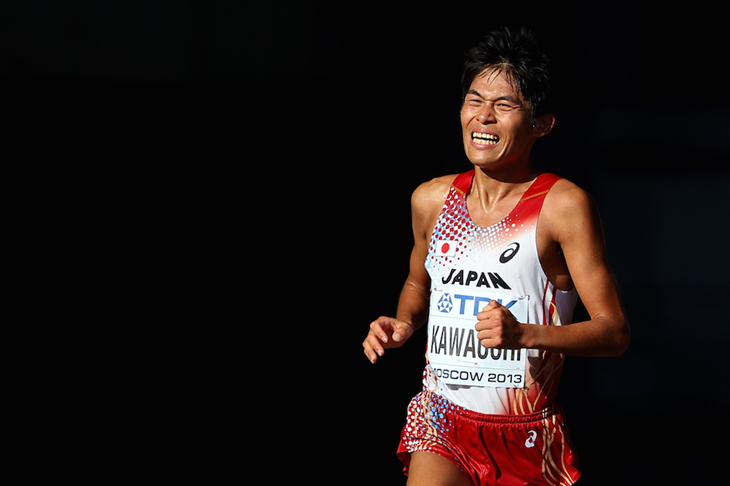The retrospective analyses of athletic careers I’ve reviewed here seem to suggest that the Polarized training model, consisting of a large amount of low intensity training peppered with small doses of high intensity, might be the preferred intensity distribution for endurance athletes.
Of course, the fact that many top endurance athletes seem to have followed a Polarized model does not in and of itself prove that this is the best approach to training. These athletes may have succeeded despite a poor training program (but with huge genetic talent).
Fortunately, there have been several well-controlled experimental studies with endurance athletes in several sports addressing this question. Let’s look at a few of these:
- Esteve-Lanao et al., (2007) compared the effect of two different 5 month training programs on 10.4k race performance in a group of 12 well-trained runners (35-37 min 10k race times). The runners were randomly assigned to one of 2 training groups that varied only in the amount of “moderately hard” (between ventilatory and lactate threshold) training they performed. Group 1’s Polarized training distribution was ~80% easy, 12% moderately hard and 8% hard. Group 2 “upgraded” some of the easy work to moderately hard running resulting in a less-polarized training distribution of 67% easy, 25% moderately hard and 8% hard. Group 1, training more easily for 5 months, had a significantly greater improvement in race performance than Group 2. On average, Group 1 improved their 10k race time 35 sec more than Group 2 athletes.
(An interesting side note is that these authors attempted in a pilot study to also evaluate a group who performed more hard training (above LT). After only 2-3 weeks the subjects in a group performing ~35% hard training began to show signs of overtraining so this idea was abandoned).
- Muñoz et al., (2014) extended these results to recreational runners, comparing a group who trained for 10 weeks using a Polarized model (77% easy, 3% moderately hard, 20% hard) with a group who trained using a Threshold model (46% easy, 35% moderately hard, 19% hard). All 30 runners completed a 10km road race before and after the 10 week training period to assess the effectiveness of the training. Both groups improved their 10km race time, with the Polarized training producing more improvement: Group 1 improved ~5% (a 1:59 improvement) and Group 2 ~3.6% (a 1:24 improvement). Though these differences were too small to be significant, when only the athletes who faithfully followed the training as outlined were examined, those in Group 1 following the Polarized model properly (some still snuck in extra moderately hard work!) had a significantly greater improvement in 10k time over those in Group 2.
- Neal et al., (2013) compared a Polarized training model with a Threshold training model in a group of trained cyclists. This was a particularly elegant study using a crossover design with washout period with 12 subjects. Basically, this means that each athlete acted as their own control, completing one of the 6 week training plans (Polarized or Threshold design), performance testing, then detraining for 4 weeks (the washout period) before completing the other 6 week training program and performance testing again. In this fashion, the change in performance from a Polarized training program could be compared with the change from a Threshold program in the same subjects.
The Polarized program had a training intensity distribution of 80%, 0% and 20% in easy, moderately hard and hard zones respectively. The Threshold program had a distribution of 57% easy, 43% moderately hard and 0% hard.
On final analysis, there were significantly greater improvements in Peak Power Output and time to exhaustion at 95% of Peak when these athletes followed the Polarized training program. The greatest improvements in 40k TT time and Peak Power output were achieved with the Polarized training model though with the small sample size these results were not significant. 40kTT time was improved for example by 8% with the Polarized training model, and only 4% by Threshold training.
These results occurred despite the fact that total training time and total training stress were higher during the Threshold training period!
- Sto?ggl and Sperlich (2014) studied a large group of 48 endurance athletes over a 9 week training period consisting of one of four training intensity distributions: High Volume Low Intensity (HVT), Polarized, Threshold or High Intensity Interval Training (HIIT).
The HVT group performed most of their training at low intensity (<2 mmol blood lactate) plus 60 min per week at lactate threshold. This formed a 83/16/1% intensity distribution.
The Polarized group performed their training at low intensity (<2 mmol lactate) except for 2×60 min high intensity interval sessions. 68/6/26% intensity distribution.
The Threshold group had some low intensity work, but most of their efforts were at or around the lactate threshold in the form of 2×60 min interval sessions, 1×90 min session of longer intervals and one fartlek workout per week. 46/54/0% intensity distribution.
The HIIT group performed a small amount of low intensity work but their main focus was 12 day blocks of hard short intervals every 15 days. These sessions consisted of 4×4 min work bouts at 90-95% maximum HR, resulting in a 43/0/57% intensity distribution.
Of these 4 training models, Polarized training induced the greatest (and statistically significant) improvements in VO2max (+11%), peak speed/power (+5%) and time to exhaustion during a ramp protocol (+17%). Speed/power at 4mmol blood lactate increased significantly in both Polarized (+8%) and HIIT (+6%) groups but not with Threshold or HVT training. VO2max was moderately increased (2.6%) by HVT training and significantly reduced (!!) by Threshold training (-4%).
These and other similar experimental studies support the findings of the retrospective analyses we reviewed earlier. Specifically, the best performance and physiological results were produced by a Polarized training model consisting of a large volume of low intensity work, coupled with a small amount (10-20%) of high intensity work and very little “moderately hard” or threshold training.
This is in sharp contrast to many training programs focused large volumes of threshold running (the moderately hard stuff) generally at the expense of adequate volumes of low intensity work and truly hard efforts. Most self-coached athletes tend to drift into this less-effective Threshold mode intuitively, guided by the false assumption that faster is always better, even for easy running.
Follow an ambitious athlete on Strava who is striving to improve (and often not succeeding) and you’ll invariably see someone who runs almost all of their runs at moderately hard speeds, performs no truly low intensity running and runs very few properly structured high-end workouts.
In contrast, I recently came across an interview with the amazing Yuki Kawauchi. Anyone who has never seen him race needs to check out some Youtube footage of his efforts over the last 10k of any of his very frequent marathons for inspiration!
Here’s how Yuki described his basic training program in 2013:
Mon/Tues/Thurs/Fri/Sat: 20km jogs at 5:00 per km
Wed: hard intervals
Sunday: race (usually half marathon or marathon race)
Yuki follows a classic Polarized model, with the vast majority of his modest 140-160km per week at a very low intensity with a small amount of vary hard work. He has run the marathon in 2:08 (3:02 per km) and does most of his run training 66% slower than that.
To put Yuki’s jogging pace in perspective, for a 3:00 marathoner, this would equate to an easy pace of right about 7:00 per km. For a 3:15 marathoner that would equate to 7:40 per km pace on easy days!
(If I had a quarter for every 3hr marathoner labeling a 4:55/km run as an “Easy” run I’d be a rich man!)
In summary, experimental work confirms that there is a place in a good training program for both low intensity running and high intensity work at the right times and in the right doses. The most productive training distribution appears to be a Polarized model, with ample truly low intensity running and adequate amounts of hard work. By understanding these training efforts and zones, and having the discipline to stay within them when called for you can realize much better performance gains for the effort you put into training.
References:
Esteve-Lanao, J., Foster, C., Seiler, K. S., and Lucia, A. (2007). Impact of training intensity distribution on performance in endurance athletes. J. Strength Cond. Res. 21, 943–949.
Munoz, I., Seiler, K. S., Bautista, J., Espana, J., Larumbe, E., and Esteve- Lanao, J. (2014). Does polarized training improve performance in recreational runners? Int. J. Sports Physiol. Perform. 9, 265–272.
Neal, C. M., Hunter, A. M., Brennan, L., O’Sullivan, A., Hamilton, D. L., De Vito, G., et al. (2013). Six weeks of a polarized training-intensity distribution leads to greater physiological and performance adaptations than a threshold model in trained cyclists. J. Appl. Physiol. (1985) 114, 461–471.
Sto?ggl, T., and Sperlich, B. (2014). Polarized training has greater impact on key endurance variables than threshold, high intensity, or high volume training. Front. Physiol. 5:33.

